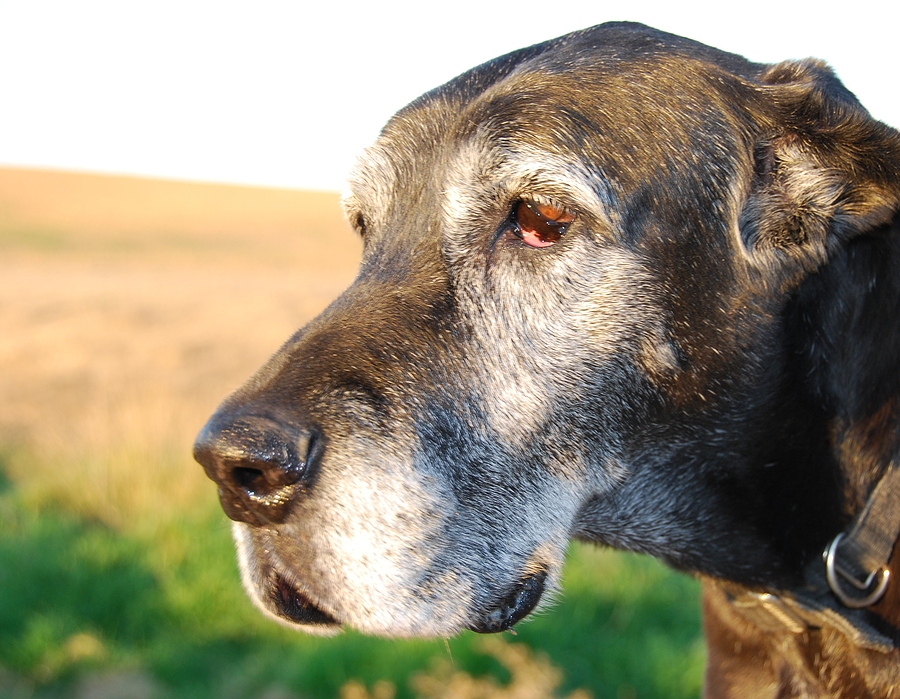Should I Be Worried About a Lump on My Dog?
For most owners, a new lump on your dog can be a source of panic and worry. Most people associate lumps on dogs with one of the most common causes of lumps in people: cancer. But it's important to keep in mind that many different types of lumps can develop on dogs for all kinds of reasons, including some which are hereditary, and many which pose no serious health risk to your dog.
Even so, lumps shouldn't be ignored. Whether your dog has developed a new lump suddenly, or you have noticed several lumps that have developed across your dog's body, it's always better to be safe than sorry and to have the areas inspected and prescribed the appropriate treatment. Here's an overview of the different types of lumps you might find on your dog, and how to make sure these lumps are appropriately addressed.

Common Types of Lumps on Dogs
Many different types of lumps may appear on your dog's body, including some that are fairly rare. But most bumps on dogs fall into one of several broad categories:
- Lipomas - These are among the most common types of lumps on dogs, and are fortunately a growth that owners don't need to worry about. These lumps are fatty benign tumors that may vary in size and can appear across a dog's body, becoming more frequent as they age. However, unless the lump is affecting the dog's mobility or quality of life, there's no health concern or reason to remove the lump. They are typically soft and easily moveable, but it's best to not diagnose at home as they can sometimes resemble the more dangerous cancers.
- Cysts - A cyst develops when one of your dog's oil glands becomes blocked. These are similar to a zit on a human, although these cysts can grow much larger. Generally, they aren't anything you need to worry about or seek treatment for, and they should go away on their own. Don't pop a cyst, though—this can increase the risk of your dog acquiring an infection through the open wound.
- Hematomas - A hematoma is essentially a raised bruise that develops as the result of trauma to your dog's flesh. The hematoma itself may be hard, swollen, and tender to the touch, but it doesn't represent a health concern for your dog. The injury underneath the hematoma, though, may need to be evaluated by a doctor to make sure there are no broken bones or serious health concerns.
- Abscesses - An abscess is caused by an infection, and it should be treated promptly by a vet. These infections will be hot to the touch and painful for your dog, but they don't pose a significant health risk as long as they are treated before the infection spreads to other parts of your dog's body. For this reason, visit a vet or vet hospital promptly to start treatment as quickly as possible.
- Cancerous Tumors - A cancerous tumor will usually be harder than a lipoma, and won't be hot or sensitive to the touch. The tumor may also be benign, in which case your dog's health won't be jeopardized by this tumor. However, a biopsy should be done to evaluate the tumor and determine whether treatment is necessary.
When Do Lumps on Dogs Develop?
Lumps may develop on your dog at any age. But an older dog is more likely to develop lumps because of the risk factors they may face for cancer or skin issues. In addition, lipomas and other types of harmless lumps are more often associated with their appearance in aging dogs, although young dogs are liable to develop these growths as well. Other lumps, such as hematomas, warts and cancer cells, are more strongly correlated with other health issues that may develop at any stage in a dog's life.
Pet owners should also keep in mind that, with certain types of lumps like lipomas, the presence of one or two lumps may increase the likelihood of more lumps developing down the road.
What Does a Cancerous Lump Look Like on a Dog?
Some types of cancer lumps on dogs will develop on the surface of your dog's skin, which can help owners identify cancer before it reaches advanced stages. Certain breeds, such as boxers and Boston terriers, are especially prone to tumors that grow externally.
One of the best ways to identify a potentially cancerous lump is to evaluate how that tumor feels when touched. Compared to the soft, fatty characteristics of a lipoma, a cancerous lump will be harder and firm to the touch, appearing as a hard immovable lump on your dog. A lump on a dog's neck or face may also prompt foul-smelling discharge from the mouth, nose or eyes, and this smell can be another indicator that the tumor is cancerous.
Ultimately, it's difficult to know whether a tumor is cancerous just by looking at it. Even your veterinarian will likely need to conduct a biopsy to determine whether the tumor is benign or malignant.
When Should You Visit Your Vet?
Typically, hard, immovable lumps that suddenly appear tend to be more worrisome than soft, moveable or slow-growing lumps, but that's not always the case for every type of cancer or abscess. Because lumps on dogs can be difficult to identify and evaluate at home, owners are encouraged to consult their vet and find out if the lump should be tested and identified.
Lumps are likely to develop at some point in your dog's life. In cases such as cancer lumps or an abscess, early detection and treatment can improve your dog's quality of life, and potentially save them from serious and life-threatening consequences.
FAQ:
1. What should I do if I find a lump on my dog?
If you find a lump on your dog, the first step is to remain calm. Not all lumps are dangerous. Schedule an appointment with your veterinarian to have the lump examined. They can determine the nature of the lump and suggest the best course of action.
2. What types of lumps can dogs develop?
Dogs can develop various types of lumps, including:
- Benign tumors: These are non-cancerous growths that don't spread to other parts of the body.
- Malignant tumors: These are cancerous and can spread to other areas.
- Cysts: Fluid-filled sacs that can form under the skin.
- Lipomas: Fatty tumors that are usually benign.
- Abscesses: Pockets of pus caused by infections.
3. How can I tell if a lump is serious?
It's challenging to determine the seriousness of a lump just by looking at it. However, some signs that may indicate a need for urgent veterinary attention include:
- Rapid growth
- Change in shape or color
- Pain or discomfort for your dog
- Bleeding or discharge
- A hard, irregular texture
4. Can a veterinarian diagnose a lump just by looking at it?
Often, a veterinarian will need to perform additional tests to diagnose a lump accurately. These tests might include:
- Fine needle aspiration (FNA): Drawing cells from the lump to examine under a microscope.
- Biopsy: Removing a small tissue sample for more detailed analysis.
- X-rays or ultrasounds: To check if the lump has affected internal organs.
5. What are common treatments for lumps in dogs?
Treatment depends on the type and nature of the lump. Common treatments include:
- Surgical removal: Often recommended for lumps that are malignant or causing discomfort.
- Medication: To shrink the lump or treat underlying infections.
- Monitoring: Regular check-ups to watch for changes in the lump.
6. Are certain breeds more prone to developing lumps?
Yes, some breeds are more prone to developing certain types of lumps. For instance, Boxers, Golden Retrievers, and Cocker Spaniels have a higher risk of developing skin tumors. However, any dog, regardless of breed, can develop lumps.
7. Can diet or lifestyle affect the likelihood of developing lumps?
While genetics play a significant role, maintaining a healthy diet and lifestyle can help overall health. Regular exercise, a balanced diet, and routine veterinary care can potentially reduce the risk of some health issues, including the development of lumps.
8. Should I be worried if my dog has multiple lumps?
Multiple lumps are not uncommon, especially as dogs age. While many lumps can be benign, it's essential to have each new lump checked by a veterinarian to rule out serious conditions.
9. How often should I check my dog for lumps?
Regularly check your dog for lumps, ideally once a month. During grooming sessions or petting, feel for any unusual bumps or changes in their skin. Early detection can make a significant difference in treatment outcomes.
10. Can lumps on dogs be prevented?
While you can't prevent all lumps, early detection and a healthy lifestyle can help manage risks. Regular veterinary check-ups and being attentive to any changes in your dog's health are crucial.
If you have any concerns or notice any changes in your dog's lumps, always consult with your veterinarian for professional advice and guidance.


